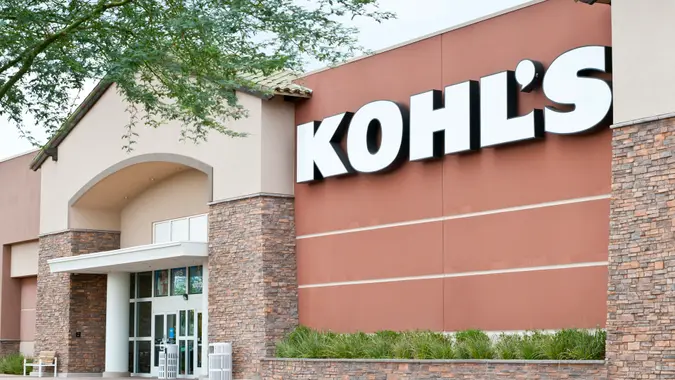I’m a Mechanic: 12 Driving Mistakes That Are Costing You Thousands Every Year

Commitment to Our Readers
GOBankingRates' editorial team is committed to bringing you unbiased reviews and information. We use data-driven methodologies to evaluate financial products and services - our reviews and ratings are not influenced by advertisers. You can read more about our editorial guidelines and our products and services review methodology.

20 Years
Helping You Live Richer

Reviewed
by Experts

Trusted by
Millions of Readers
Most expensive car problems don’t start with mechanical failures. They start with driver mistakes that slowly drain your wallet through wasted fuel, premature wear and avoidable repairs.
Chris Pyle, mechanic and auto expert from JustAnswer, said many of these mistakes happen both behind the wheel and away from it. Here are the costly errors he sees repeatedly.
1. Skipping Fluid and Filter Changes
Pyle warned that not replacing fluids and filters leads to premature engine and transmission failure. Oil breaks down over time, losing its ability to lubricate and cool engine components. Dirty transmission fluid causes shifting problems and internal wear.
Engine rebuilds cost $2,500 to $4,000. Transmission replacements run $1,800 to $3,400. Following manufacturer maintenance schedules for fluid and filter changes costs a few hundred dollars annually — a fraction of major repair costs.
2. Ignoring Tune-Ups
Skipping tune-ups results in cars running poorly and consuming more fuel, according to Pyle. Worn spark plugs, dirty air filters and failing ignition components reduce fuel efficiency by 10% to 30%.
At $4 per gallon, a car getting 20 mpg instead of 25 mpg due to poor maintenance wastes roughly $400 annually on a 12,000-mile driving year. Tune-ups cost $200 to $400 but pay for themselves through fuel savings alone.
3. Neglecting Alignment and Tire Pressure
Pyle said not getting your car aligned and keeping tires at correct pressure results in tires wearing out too soon. Misalignment causes uneven tire wear, potentially cutting tire life in half. A $600 set of tires lasting 30,000 miles instead of 60,000 miles doubles your tire costs over time.
Underinflated tires also reduce fuel economy by 3% to 5%. Alignments cost $75 to $200. Tire pressure checks are free at most gas stations. Both prevent much larger expenses down the road.
4. Driving With Two Feet
Pyle called two-foot driving a significant problem that uses excess fuel, wears out brakes and can warp rotors and overheat brake fluid. He added that it unlocks the torque converter clutch, resulting in high transmission temperatures.
Riding the brake while accelerating forces the engine to work harder, burning more fuel while simultaneously wearing brake components. Brake jobs cost $300 to $800 per axle. Transmission cooling system repairs run $500 to $1,500. Using only your right foot eliminates these costs entirely.
5. Using Your Phone While Driving
Phone use leads to frequent collisions which can damage cars, lives or even take lives, Pyle said. Beyond the obvious safety concerns, even minor fender benders cost $2,000 to $5,000 in repairs and cause insurance rate increases of 20% to 40% for three to five years.
A single distracted driving accident costing $3,000 in repairs plus $600 annually in higher insurance premiums totals $6,000 over five years — all completely avoidable by putting the phone down.
6. Speeding To Save Minutes
Pyle criticized driving fast to arrive three minutes early or leaving late and driving fast to make up time. “You use more fuel, making your car work harder than designed,” he explained. “Also, this can result in a collision or a speeding ticket.”
Aggressive acceleration and high speeds reduce fuel economy by 15% to 30% on highways. Speeding tickets cost $150 to $300 plus insurance increases. The time saved is measured in minutes while the costs are measured in hundreds of dollars.
7. Misusing Four-Wheel Drive
Pyle clarified that a 4×4 vehicle will not turn better, stop better or cruise better in bad weather. “It will only help you take off and get up hills,” he said. “Using it on semi-covered roads and when not needed will wear out the tires and driveline.”
Four-wheel drive systems increase fuel consumption and accelerate tire wear when engaged unnecessarily. Premature tire replacement due to misuse adds hundreds in costs while providing zero benefit on dry or lightly covered roads.
8. Driving While Tired
Tired driving is not different than driving drunk except you don’t go to jail when you wreck, according to Pyle. “However, you can injure yourself, others in your car or others on the road. This results in higher insurance rates for something you could have easily prevented.”
Drowsy driving causes an estimated 100,000 crashes annually in the U.S. Not only is it dangerous, but even minor accidents from fatigue also trigger the same insurance rate increases as other at-fault collisions.
9. Driving Distracted
Pyle said driving with your head not in the game leads to running off roads, hitting speed bumps too fast and hitting curbs. “This can ruin tires, take off your mirrors and damage steering components.”
Pothole and curb damage costs $100 to $500 per incident for tire replacements or wheel repairs. Steering component damage from impacts runs $200 to $800. Mirror replacements cost $150 to $500 depending on technology. All result from momentary inattention that’s easily preventable.
10. Driving Through Water
Pyle warned against assuming water is shallow or not moving fast. “Your engine can ingest water, thus ruining it. Your car can stall or float away. You are now in danger as well as the people who have to save you.”
Hydrolock damage from water ingestion totals the engine, requiring replacement or extensive rebuilding costing $3,000 to $8,000. Insurance may not cover flood damage depending on your policy. The safe choice is always turning around rather than risking thousands in repairs.
11. Getting Service Without Knowledge
Pyle said getting service or repairs without knowing anything about your car or the recommended repairs means “you may be taken advantage of, paying way too much for stuff you do not need.”
Unnecessary repairs or marked-up parts can add up, and fast. A $600 repair becomes $900 when shops recommend unneeded services. Learning basic car maintenance and getting second opinions prevents these inflated costs.
12. Using Automatic Car Washes
Pyle criticized automatic car washes that spray harsh chemicals that over time can damage paint, wheels and trim. He also called out car wash wax that “looks and sounds good, but in reality only lasts about three days.”
Paint damage from harsh chemicals reduces resale value by hundreds or thousands of dollars. Paying $15 to $20 per wash for wax that disappears in three days wastes $250-plus annually. Hand washing or touchless washes with quality home wax products cost less and protect your investment better.
 Written by
Written by  Edited by
Edited by 

























